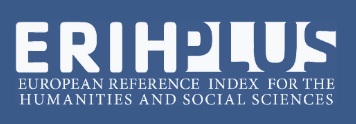Original article
DOI: https://doi.org/10.15507/2076-2577.016.2024.04.431-443
EDN: https://elibrary.ru/lchzvb
УДК / UDC 314.9(=511.1)
Ethnodemographic Processes among the Udmurts of the Kirov Region during the Soviet Period
N. V. Chernysheva
Institute for Demographic Research, Federal Center of Theoretical and Applied Sociology of the Russian Academy of Sciences, Moscow, Russian Federation
Abstract
Introduction. Historically, Russian society has developed as a multiethnic one, and today its composition is undergoing changes largely driven by assimilation processes. In this context, the topic of ethnodemography is relevant yet underexplored. For a long time in the USSR, demographic data were classified, and later it was revealed that existing sources contain information on ethnodemographic processes only for certain years, with incomplete records. Therefore, researchers need to utilize additional information sources and interdisciplinary studies, which may help fill existing statistical gaps. The aim of this study is to analyze demographic processes among the Udmurts of the Kirov region from its formation until the collapse of the USSR.
Materials and Methods. The analysis was based on data from the All-Union Population Censuses of 1926, 1937, 1939, 1959, 1970, 1979, and 1989, as well as from the All-Russian Population Censuses of 2002, 2010, and 2020, along with data from the ongoing registration of natural population movement. Various research methods were employed during the study. General scientific methods of analysis, systematization, and synthesis allowed for the identification of major demographic changes among the Udmurts. Special historical methods, in particular the historical-comparative method, were used to correlate reproduction trends among the Udmurts and the regional population as a whole. The historical-genetic method helped define ethno-demographic trends, while the historical-systemic method was used in analyzing the characteristics of reproduction processes.
Results and Discussion. In the course of the research, the main ethnodemographic characteristics of the Udmurt people in the Kirov region during the Soviet period were identified. It was found that demographic changes followed all-Russian and regional trends; however, the Udmurts exhibited specific features in population reproduction and assimilation processes.
Conclusion. By the time the Kirov Region was established, the number and proportion of Udmurts within the region had significantly decreased, primarily due to administrative and territorial reforms. Overall, during the Soviet period, the Udmurt population in the region somewhat declined in absolute terms, though its proportion slightly increased. This was influenced by the completion of the demographic transition, assimilation processes, and active migration to urban areas. The composition of Udmurt families has gradually shifted, with an increasing number of ethnically mixed marriages. These processes contributed to changes in the demographic situation.
Keywords: USSR, Kirov region, population census, ethnodemographic processes, Udmurts
Funding: The research was conducted with the support of the Russian Science Foundation grant No. 23-28-01604, available at https://rscf.ru/project/23-28-01604/, at the Udmurt State Agrarian University.
Conflict of interest: The author declares no conflict of interest.
For citation: Chernysheva N.V. Ethnodemographic Processes among the Udmurts of the Kirov Region during the Soviet Period. Finno-Ugric World. 2024;16(4):431–443. https://doi.org/10.15507/2076-2577.016.2024.04.431-443
Information about the аuthor:
Natalia V. Chernysheva, Dr.Sci. (Hist.), Associate Professor, Chief Researcher, Head of Historical Demography Department Institute for Demographic Research, Federal Center of Theoretical and Applied Sociology of the Russian Academy of Sciences (6, bld. 1 Fotieva St., Moscow 119333, Russian Federation), ORCID: https://orcid.org/0000-0002-1492-5368, SPIN-code: 5179-4022, natiche84@mail.ru






















